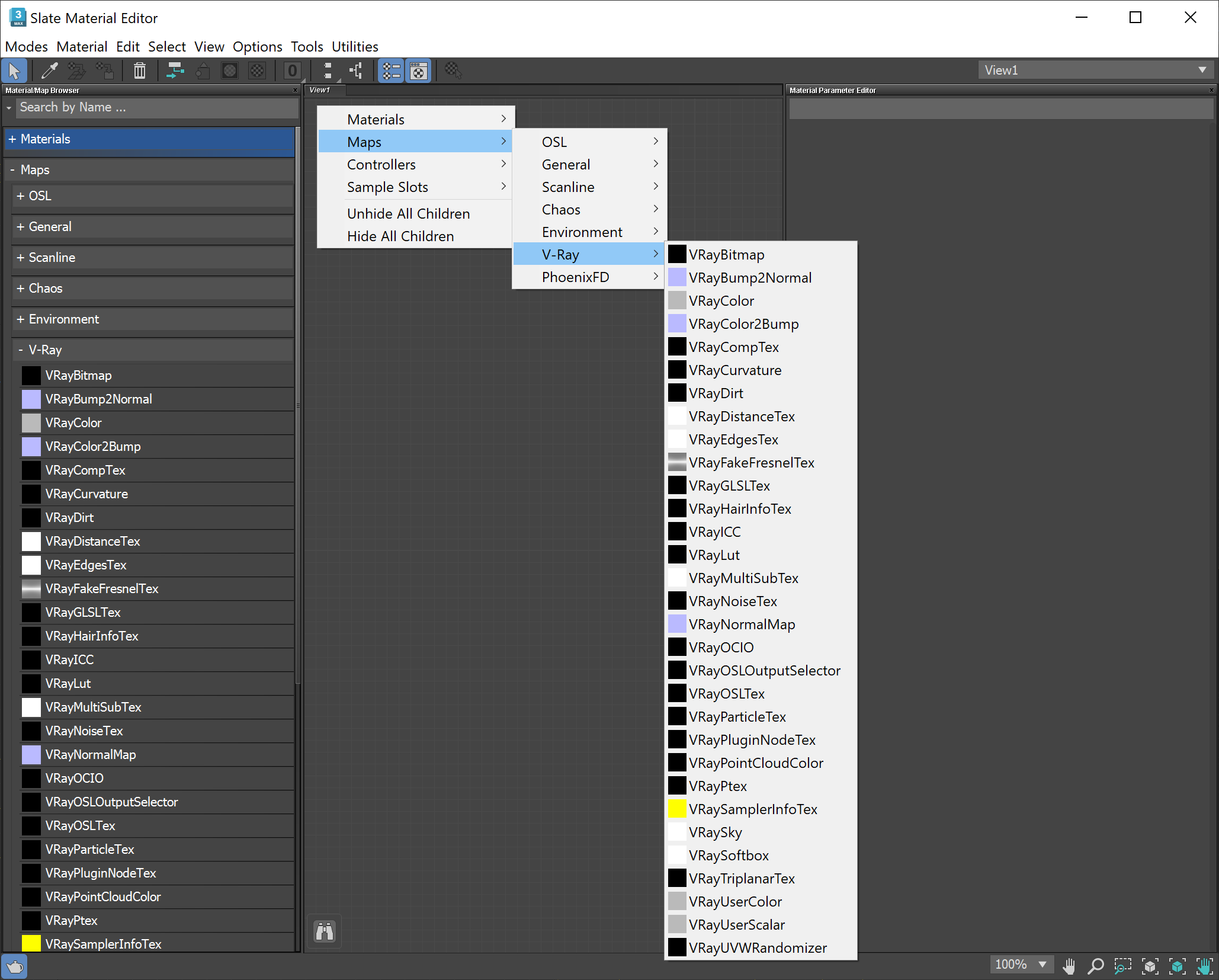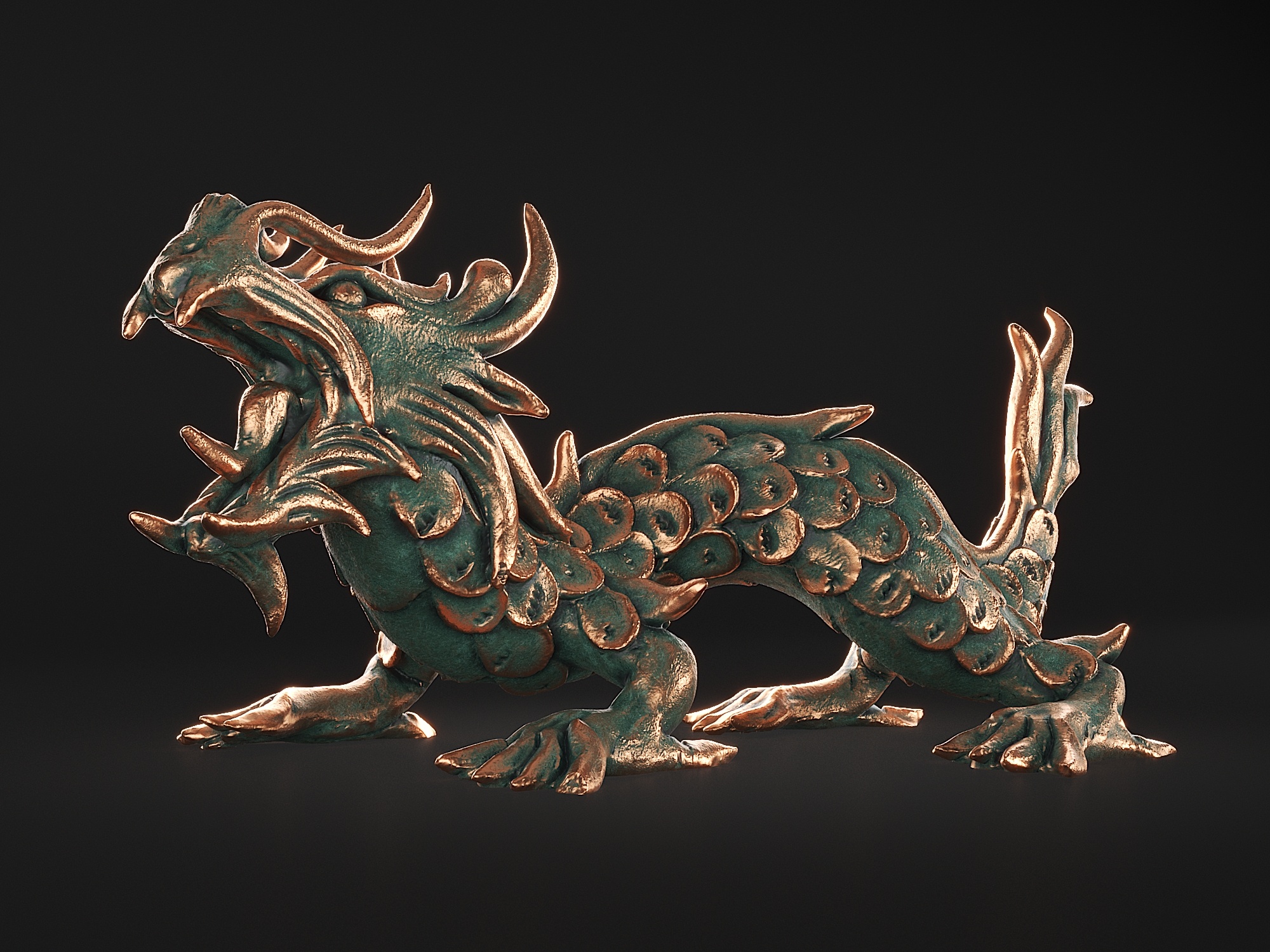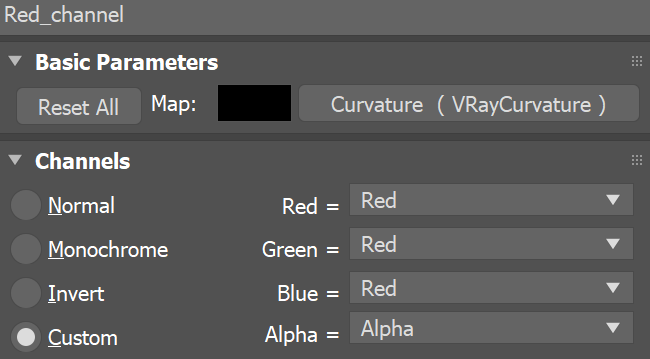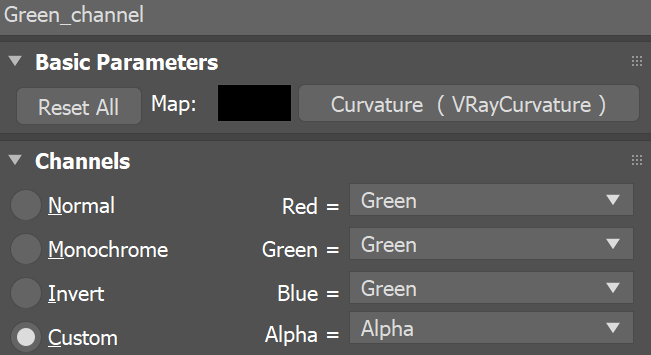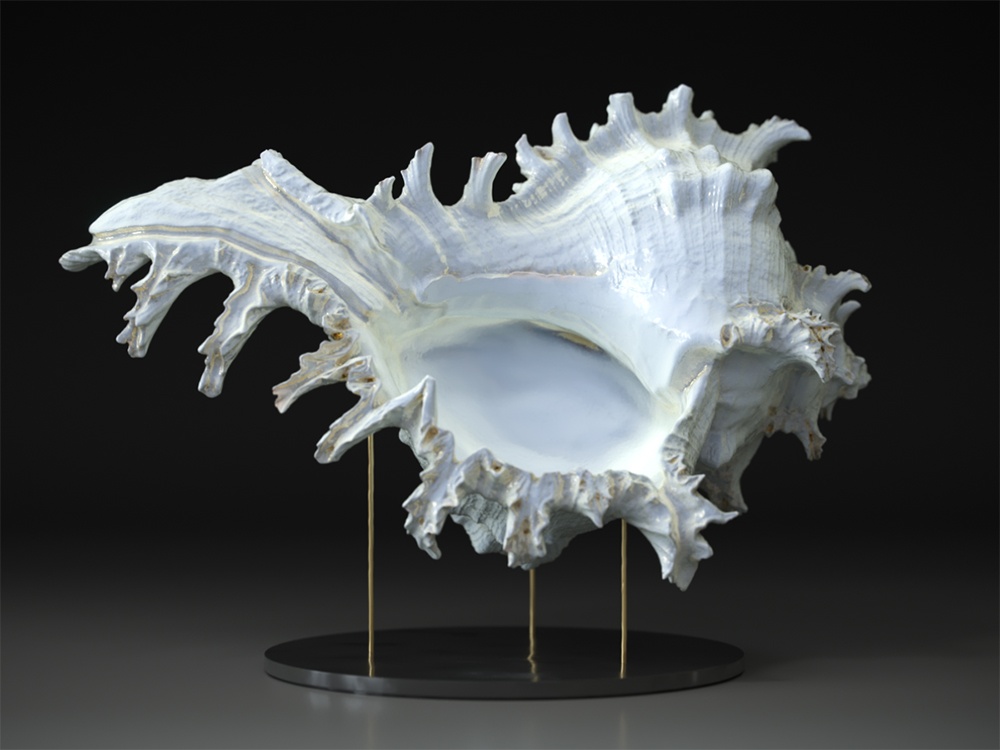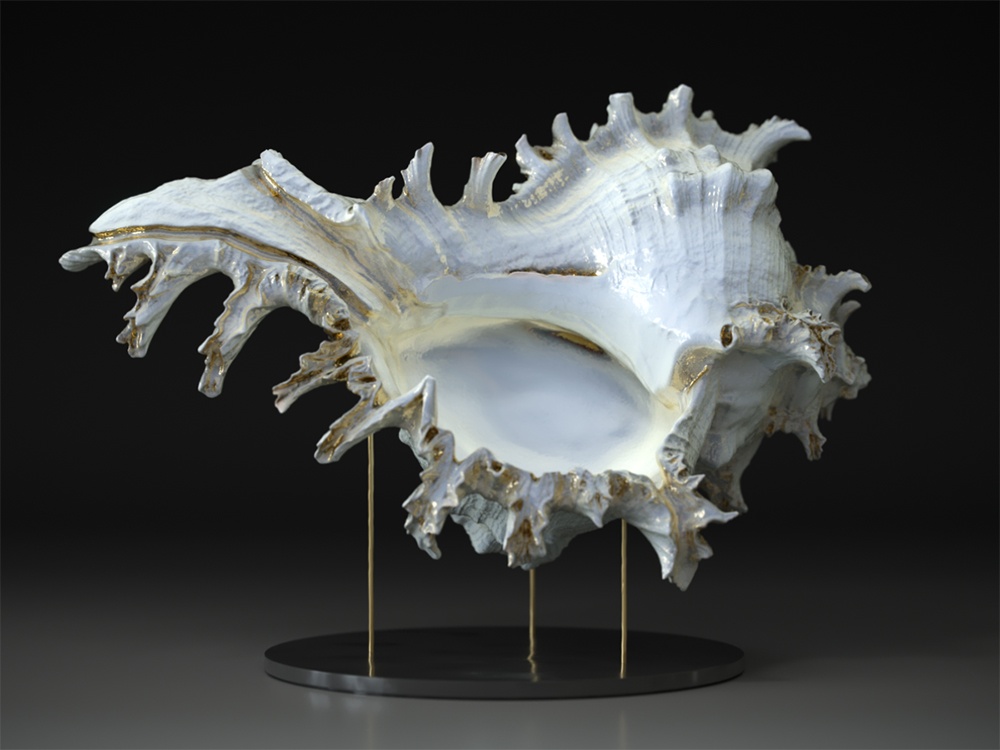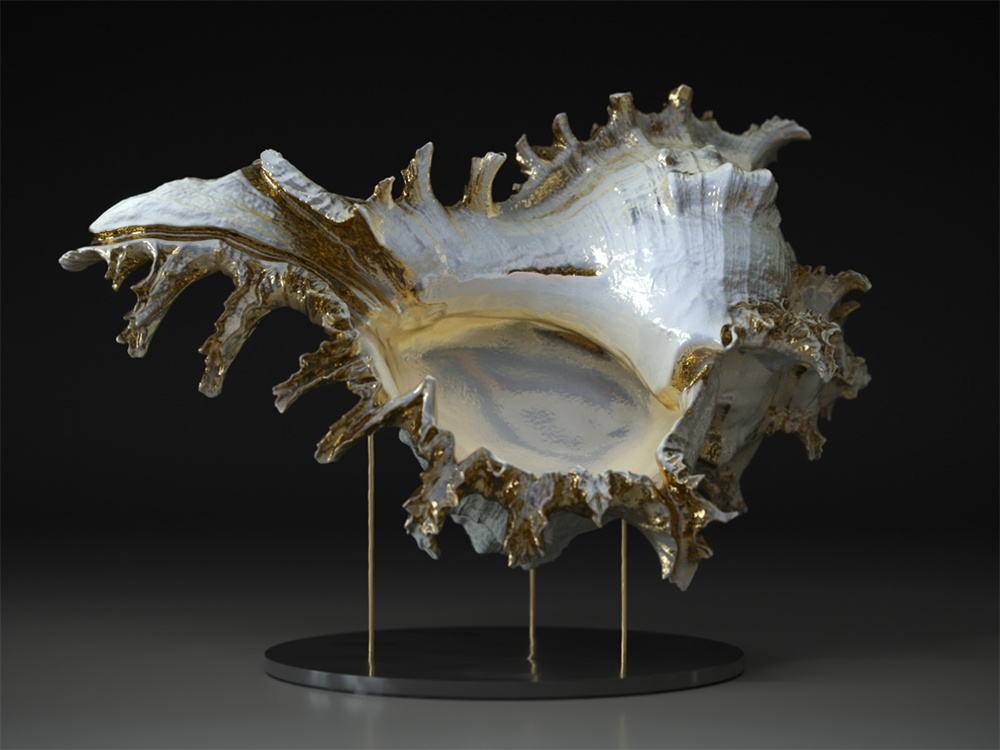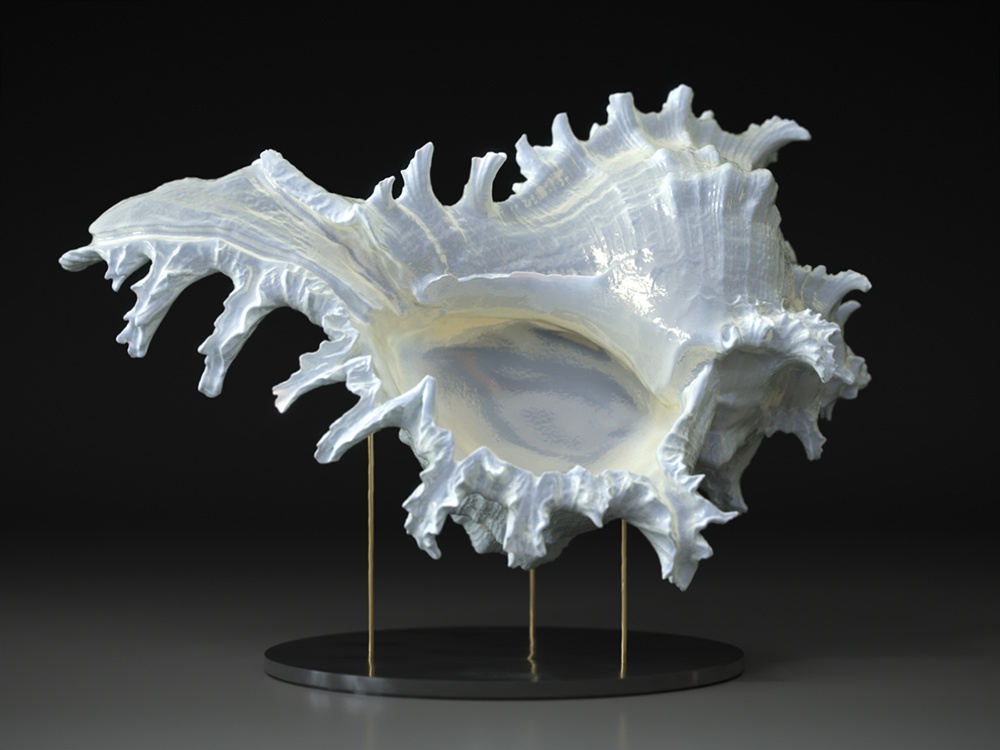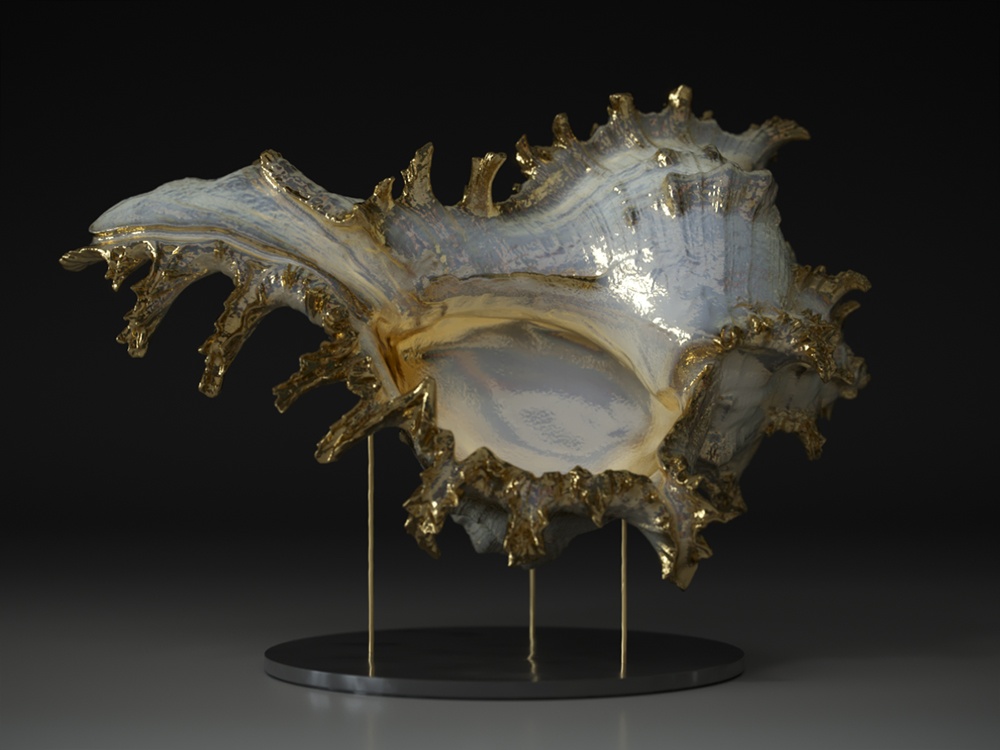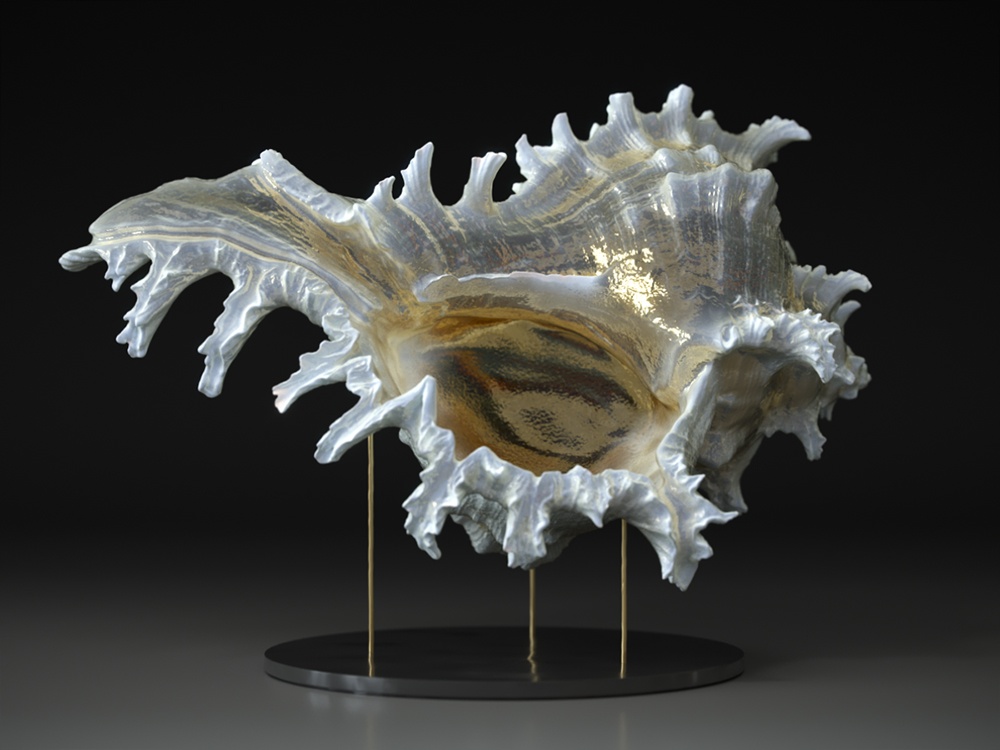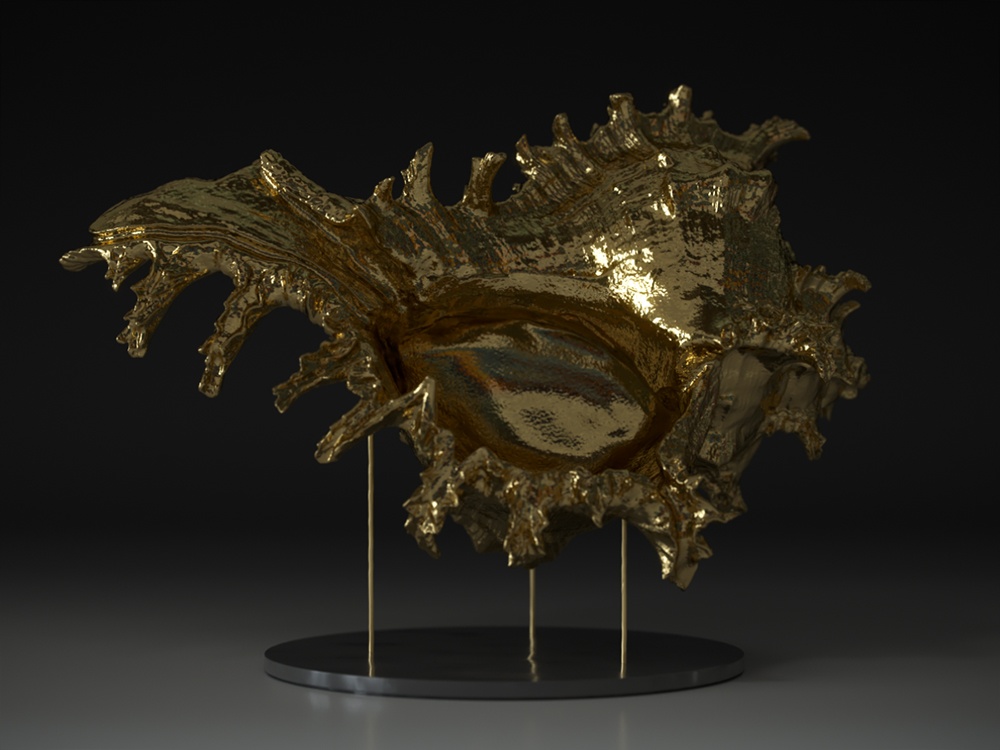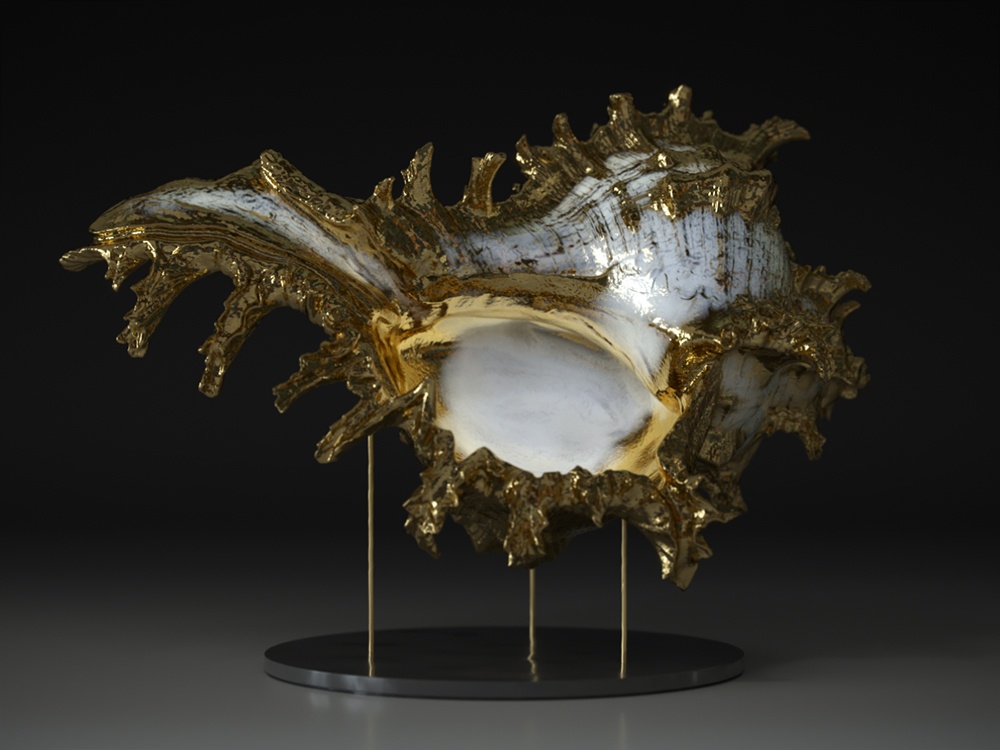This page provides information on the Curvature Map.
Overview
VRayCurvature is a texture that effectively samples the underlying mesh, and renders a gradient based on a surface's curvature.
A region around each shaded point is sampled with additional rays (similar to VRayDirt) and all additional normals are averaged to get a "smooth" normal at the original point. This normal is used to compute the resulting color, which depends on the Mode of the map. The parameters should be adjusted by trial and error since they generally depend on the radius used, hence the defaults might not be appropriate in some cases.
Parameters
Mode – Switches between respective modes. See the Curvature Modes example below for more information.
Legacy – Does not distinguish if the mesh is curving outward (convex) or inward (concave) but instead takes into account only the amount of overall curvature.
Convex – Generates a grayscale based on the mesh's outward curve.
Concave – Generates a grayscale based on the mesh's inward curve.
Both – Generates a red-green gradient based on both the mesh's convex and concave. Red corresponds to the mesh's convex and green corresponds to the mesh's concave.
Subdivs – Controls the number of samples around each shaded point.
Sample spread – Controls the radius of the sampled region. See the Sample Spread example below for more information.
Radius – Factor determining the radius that the curvature traces. Can be used to match curvature between big and small objects.
Ignore bump – Excludes Bump maps from VRayCurvature computations. See the Ignore Bump example below for more information.
Output min color – Specifies the minimum output color value for the most concave area (the dents in the mesh). Default value is 0 - completely black. See the Output Min and Max Color below for more information.
Output max color – Specifies the maximum output color value for the most convex area (the peaks in the mesh). Default value is 1 - white. See the Output Min and Max Color below for more information.
Output gain – Multiplies the output values. See the Output gain example below for more information.
Output lift – Uniformly lightens the output values.
Output gamma – Applies gamma correction to the output values.
Output pivot – Pivots the value to the gamma correction (output values equal to the pivot value are left unchanged).
Output clamp – Clamps the Output min color and Output max color values in [0,1] range (negative values are output as 0 and values above 1 are being output as 1).
Example: Curvature Modes
VRayBlendMtl (with mixed Copper and Patina materials) is applied to the geometry. VRayCurvature map is used as the blend amount. The Output gain is set to 5.5 and the Output gama - to 0.1. All other parameters are left at their default states. See the Both Mode note for specifics on how to set up that mode.
Both mode outputs a red and green color gradient instead of a black and white one. Using it as a blend amount for the VRayBlendMtl produces color blended materials. To avoid this, we use the Red and Green components of the VRayCurvature map separately to generate two monochromatic masks using Color Correction maps. This allows the generated red-green gradient to be used as a grayscale blend amount, like in all other Curvature modes. In this setup an additional (third) Dark Patina material is used, which appears in the most concave parts of the model. In addition, Output gama is set to 1.5 for more pleasant results. Click the expanding preview to see the Slate Material Editor setup.
Example: Sample Spread
A VRayBlendMtl material with white ceramic as the Base material and Gold as the Coat material is applied to the Shell. VRayCurvature is used for a Blend map.
The Mode of the VRayCurvature map is set as Concave and the Radius is set to 0.2 cm.
Example: Output Min and Max Color
The Mode of the VRayCurvature map is set as Convex, Sample spread is set to 2, the Radius is set to 0.2 cm.
Example: Output Gain
A VRayBlendMtl with white ceramic as the Base material and Gold as the Coat material is applied to the shell.
VRayCurvature is used for a Blend map. The Mode of the VRayCurvature Blend map is set to Convex.
Sample spread is set to 2, the Radius is set to 0.2 cm. Output min color is set to 0, Output max color is set to 0.5.
Example: Ignore Bump
Here we've used a VRayCurvature map to darken the most protruded areas and simulate a burnished leather effect. To do so, a darker variant of the original diffuse leather map is created and both are linked through a Mix map. VRayCurvature map serves as the Mix Amount. For this model, the VRayCurvature map uses a Radius of 0.2 and the Output max color is set to 5.0. All other parameters are left at their default state.
Notes
- VRayDirt and VRayCurvature have their own Subdivs parameters which work independently from the Adaptive sampling settings.

